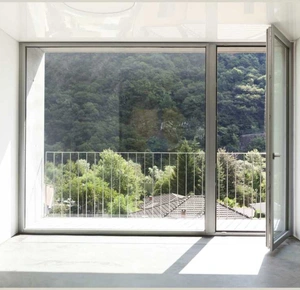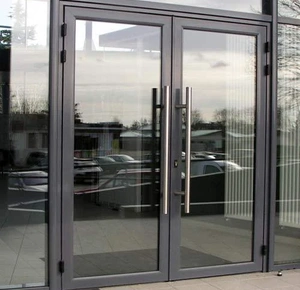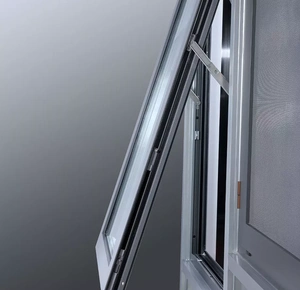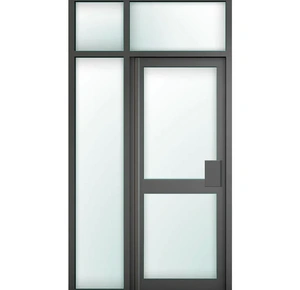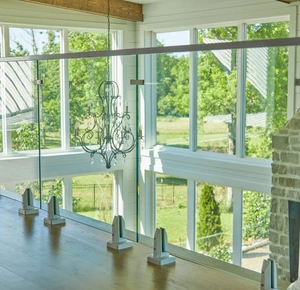What is a Thermal Break in a Window?
As energy efficiency and sustainable building practices become increasingly important, the materials and technologies used in modern window design are evolving. One of the most significant advancements in improving the energy performance of windows is the thermal break. If you've been researching energy-efficient windows, you've likely come across this term, but what exactly does it mean? And how does it affect the performance of your windows?
In this article, we'll explore what a thermal break is, how it works, why it's crucial for energy-efficient windows, and the benefits it offers for both homeowners and commercial properties.
1. Defining a Thermal Break
A thermal break refers to an insulating barrier inserted between the interior and exterior sections of a window frame, typically made of aluminium or metal. Since materials like aluminium are excellent conductors of heat, a thermal break prevents heat transfer through the metal, effectively improving the window’s insulation properties.
In simpler terms, a thermal break stops the flow of heat from the outside of the window frame to the inside of your home or building. Without this insulating layer, heat would travel through the metal frame and into (or out of) your home, reducing energy efficiency and making your indoor environment less comfortable.
2. Why Are Thermal Breaks Necessary?
Aluminium and metal window frames are prized for their strength, durability, and sleek, modern design. However, one of their key drawbacks is their tendency to conduct heat. This means that in winter, cold air can transfer from the outside of the frame to the inside, leading to heat loss. Similarly, in summer, outdoor heat can penetrate into your home, making it harder to keep cool.
This heat transfer reduces the overall energy efficiency of your windows and can lead to uncomfortable indoor temperatures, increased reliance on heating and cooling systems, and higher energy bills.
A thermal break is necessary because it acts as a barrier between the indoor and outdoor environments, preventing unwanted heat transfer through the frame. It significantly improves the thermal performance of metal-framed windows, making them more comparable to other insulating materials like wood or uPVC.
3. How Does a Thermal Break Work?
A thermal break works by inserting an insulating material, such as polyamide or polyurethane, between the interior and exterior portions of the window frame. This material has low thermal conductivity, meaning it does not easily transfer heat. By breaking the metal frame into two separate sections—one exposed to the outside and one to the inside—the thermal break effectively minimizes the amount of heat that can pass through the frame.
Here’s how it works in different seasons:
- In winter: The thermal break prevents cold air from transferring through the window frame and into your home, keeping the interior warmer and reducing the need for heating.
- In summer: The thermal break blocks outdoor heat from entering through the frame, helping to keep the interior cool and reducing the strain on your air conditioning system.
By breaking the path for heat conduction, the thermal break dramatically enhances the insulation performance of the window.
4. Benefits of Thermal Breaks
Installing windows with thermal breaks offers several benefits that enhance both the comfort and energy efficiency of your home or building. Below are the key advantages of choosing windows with thermal breaks:
4.1 Improved Energy Efficiency
The primary benefit of thermal breaks is their ability to improve energy efficiency. By preventing heat from escaping in winter and blocking unwanted heat in summer, thermal breaks reduce the workload on your heating and cooling systems. This results in lower energy consumption and reduced utility bills.
Thermal breaks can help achieve energy ratings such as ENERGY STAR, making your home more eco-friendly and compliant with modern energy efficiency standards.
4.2 Increased Comfort
Windows with thermal breaks contribute to a more consistent indoor temperature by preventing drafts and heat loss. This helps create a more comfortable living or working environment, regardless of the outdoor weather conditions.
4.3 Condensation Prevention
When the inside of a window frame becomes too cold, condensation can form, leading to moisture buildup and potential problems such as mould growth or damage to surrounding walls. The insulating properties of thermal breaks keep the interior frame warmer, reducing the risk of condensation and the problems that come with it.
4.4 Enhanced Noise Insulation
While thermal breaks are primarily designed to prevent heat transfer, they also contribute to soundproofing. The insulation in the frame helps block out external noise, which can be especially beneficial for homes in busy urban areas or near highways.
4.5 Durability and Low Maintenance
Windows with thermal breaks, particularly aluminium windows, are highly durable and require minimal maintenance. Aluminium is resistant to rust, corrosion, and warping, and the thermal break ensures that these windows maintain their energy efficiency for decades.
5. Types of Windows with Thermal Breaks
While thermal breaks are most commonly found in aluminium-framed windows, they can also be incorporated into other metal frames, such as steel. Here are some common window types that benefit from thermal break technology:
- Casement windows: Hinged windows that open outward, often found in homes for maximum airflow and ventilation.
- Sliding windows: Horizontally sliding windows that are perfect for spaces with limited room for outward-opening windows.
- Tilt-and-turn windows: Versatile windows that can be tilted open from the top for ventilation or fully opened inward for cleaning and emergency exits.
- Fixed windows: Windows that do not open but provide large, uninterrupted views and maximum natural light, often used in commercial buildings or modern homes.
All of these window types can incorporate thermal breaks to improve energy efficiency without sacrificing the sleek, modern appearance of metal frames.
6. Are Thermal Breaks Worth the Investment?
Although windows with thermal breaks can have a slightly higher initial cost compared to non-thermal break windows, they offer long-term savings through reduced energy bills and improved comfort. Additionally, the environmental benefits of reduced energy consumption align with the growing demand for sustainable building practices.
In cold climates, the reduced heat loss and improved indoor warmth make thermal breaks especially worthwhile. Similarly, in hot climates, thermal breaks help keep homes cooler, reducing the need for air conditioning. This means that regardless of your location, windows with thermal breaks are a sound investment for energy-conscious homeowners and businesses.
7. Conclusion
A thermal break in a window is a critical component for improving energy efficiency in modern architecture. By creating an insulating barrier between the inside and outside of the window frame, thermal breaks significantly reduce heat transfer, helping to keep your home warmer in the winter and cooler in the summer. This technology not only enhances comfort but also lowers energy costs, prevents condensation, and reduces the environmental impact of your building.
For anyone considering aluminium or metal-framed windows, choosing models with thermal breaks is an effective way to combine style, durability, and energy efficiency. As energy standards continue to rise, investing in windows with thermal breaks ensures that your building remains eco-friendly, comfortable, and cost-efficient for years to come.
Frequently Question and Answers
What is a thermal break in a window?
A thermal break is an insulating barrier inserted between the interior and exterior sections of a window frame, typically in aluminium windows, to prevent heat transfer and improve energy efficiency.
Why are thermal breaks important in windows?
Thermal breaks stop heat from flowing through the window frame, making your home more energy-efficient by keeping the indoor temperature stable. They reduce heat loss in winter and block outdoor heat in summer.
How does a thermal break improve energy efficiency?
A thermal break reduces the amount of heat that passes through the window frame, which lowers the need for heating or cooling systems to regulate indoor temperatures, thereby reducing energy costs.
Can thermal breaks help prevent condensation?
Yes, thermal breaks help prevent condensation by keeping the interior frame warmer, which reduces the likelihood of moisture forming on the glass and window frame.
What materials are used in thermal breaks?
Thermal breaks are usually made from insulating materials such as polyamide or polyurethane, which have low thermal conductivity and prevent heat transfer through the window frame.
Are windows with thermal breaks more expensive?
While windows with thermal breaks may have a higher initial cost compared to non-thermal break windows, they offer long-term savings by improving energy efficiency, lowering utility bills, and increasing comfort.
